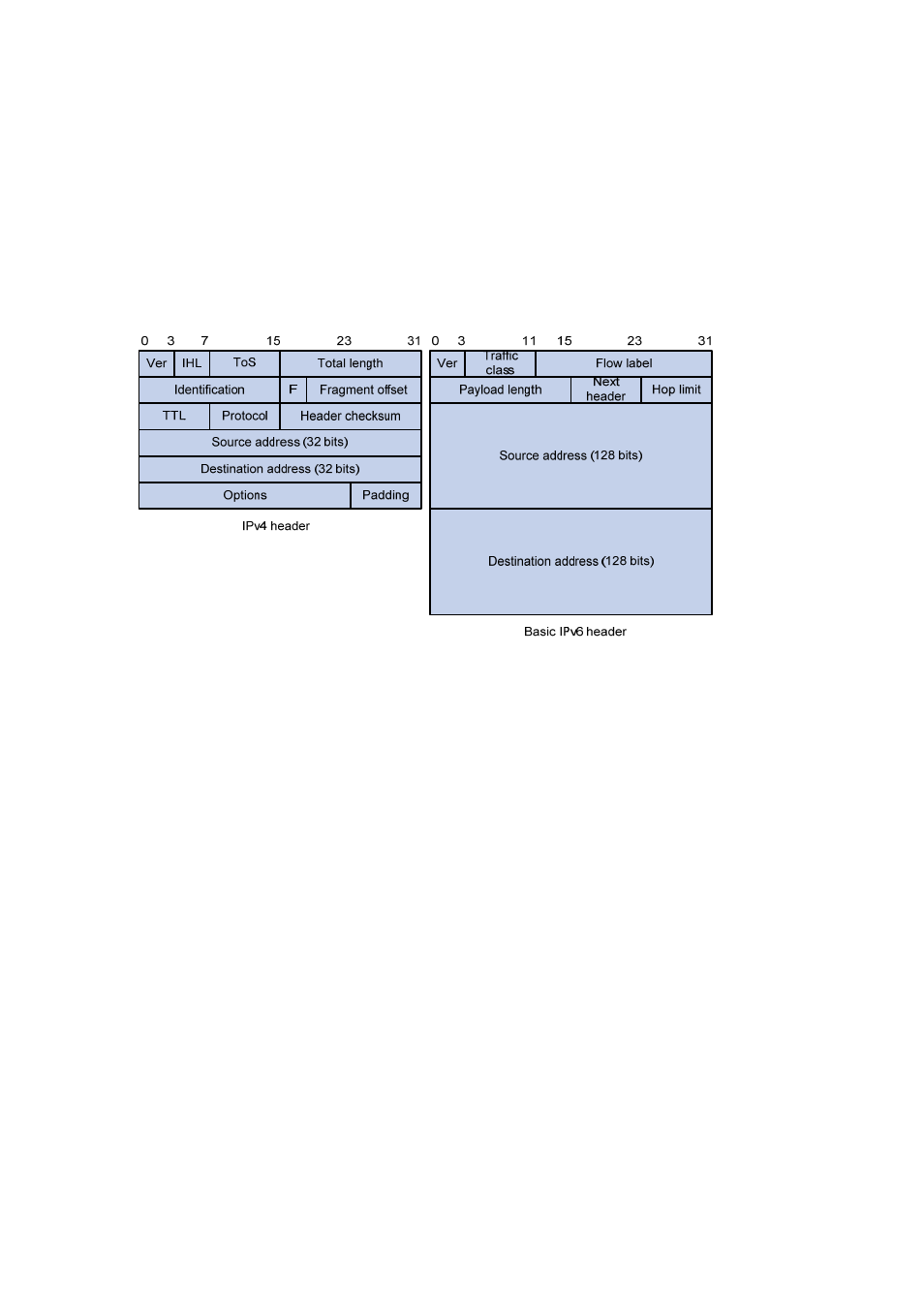Ipv6 features, Header format simplification, Adequate address space – H3C Technologies H3C S7500E Series Switches User Manual
Page 121: Hierarchical address structure, Automatic address configuration, Built-in security

13-2
IPv6 Features
Header format simplification
IPv6 cuts down some IPv4 header fields or move them to the IPv6 extension headers to reduce the
length of the basic IPv6 header. IPv6 uses the basic header with a fixed length, thus making IPv6
packet handling simple and improving the forwarding efficiency. Although the IPv6 address size is four
times the IPv4 address size, the basic IPv6 header size is 40 bytes and is only twice the IPv4 header
size (excluding the Options field).
Figure 13-1 Comparison between IPv4 packet header format and basic IPv6 packet header format
Adequate address space
The source and destination IPv6 addresses are both 128 bits (16 bytes) long. IPv6 can provide 3.4 x
10
38
addresses to fully meet the requirements of hierarchical address division as well as allocation of
public and private addresses.
Hierarchical address structure
IPv6 adopts the hierarchical address structure to quicken route search and reduce the system sources
occupied by the IPv6 routing table by route aggregation.
Automatic address configuration
To simplify host configuration, IPv6 supports stateful and stateless address configuration.
z
Stateful address configuration means that a host acquires an IPv6 address and related
information from a server (for example, a DHCP server).
z
Stateless address configuration means that a host automatically generates an IPv6 address and
related information on the basis of its own link-layer address and the prefix information advertised
by a router.
In addition, a host can generate a link-local address on the basis of its own link-layer address and the
default prefix (FE80::/10) to communicate with other hosts on the same link.
Built-in security
IPv6 uses IPsec as its standard extension header to provide end-to-end security. This feature provides
a standard for network security solutions and enhances the interoperability between different IPv6
applications.